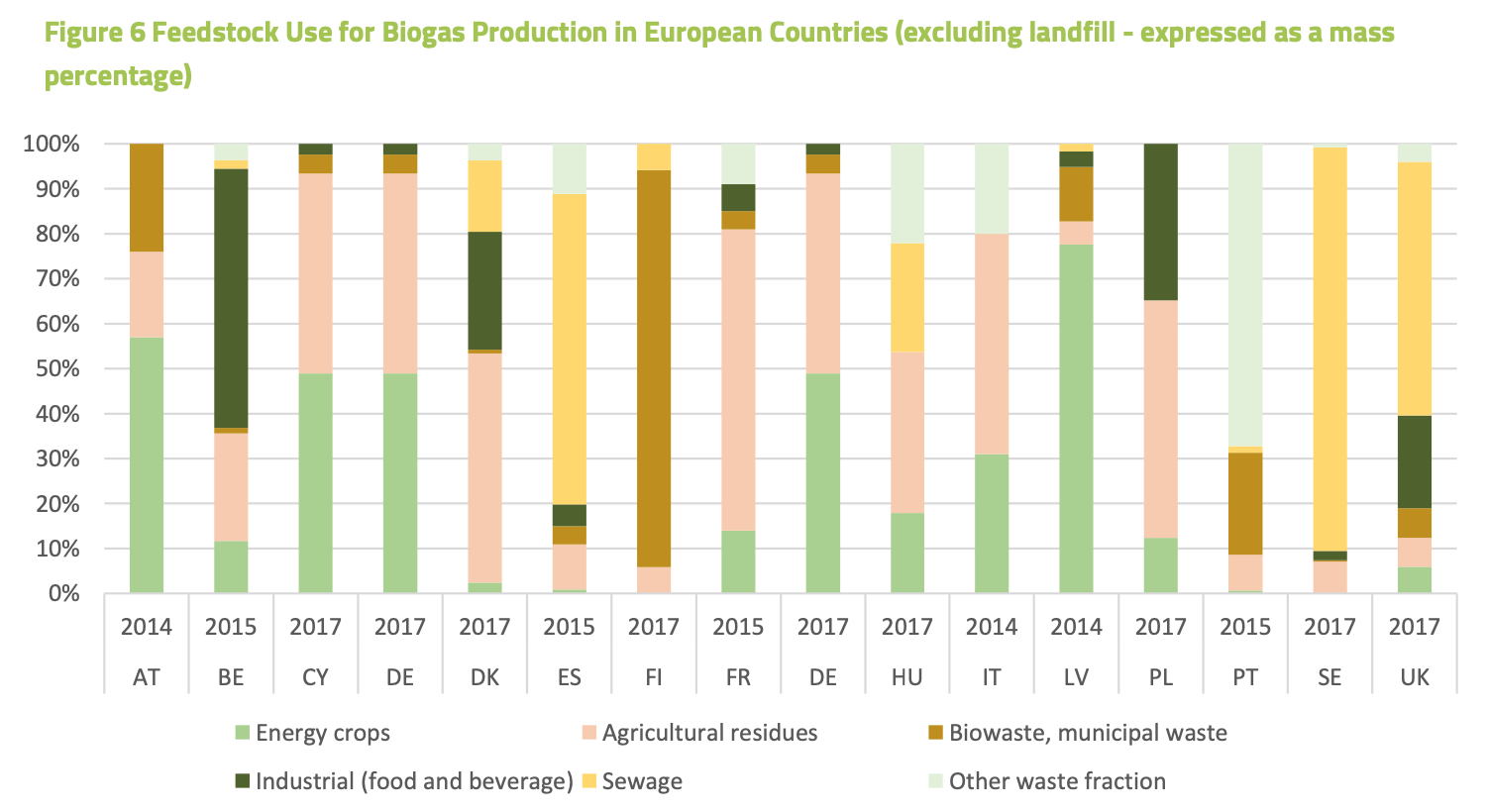NG/E&Y potential: 729 - 1,333m m3
Credible potential: 250 - 750m m3
Other than sewage, food waste (post-farm-gate) is the main feedstock (around 50%) of anaerobic digestion in the UK, because it has a good gas yield and historically some waste-disposal income (i.e. gate fee).[1]
There was very little anaerobic digestion (other than sewage and landfill gas) in 2009. This was one area where there was genuine potential for a material increase in gas production, whether for electricity, heat or biomethane. If policies had directed all the material to biomethane, E&Y could reasonably have claimed all the gas potential from this material.
Food waste was a hot topic in the years up to 2009. On the upside, the resource was large. 3.6m tonnes of domestic food was thought to be wasted annually.[2] Estimates of Commercial & Industrial (C&I) food wastes varied widely, depending on reporting and definition, but pointed to around 3.5m tonnes excluding compostable/garden waste.[3]
On the downside, the policy preference for this material was not to utilise it for energy, but to reduce it.[4] That, of course, would reduce its potential as a feedstock for AD. Half the resource (the domestic element) was not available to digesters unless councils chose to implement separate collection, and would depend on the efficiency with which the public separated their waste.
With full source-separation and collection, and no waste-reduction, this material had the potential for up to around 750m m3. A prudent assessment would have assumed some minimisation and incomplete collection, and some use for the generation of electricity and/or heat (e.g. where large food-waste producers produced their own gas for their own processes on site).
History bares out the prudent judgment. Significantly more of the resource went to electricity and heat than to biomethane.[5]Separate collection remains incomplete. Significant efforts are being made to reduce the volume of food waste, or to divert the material to other uses perceived as higher value.
WRAP are actively promoting the diversion of material that currently goes to anaerobic digestion to uses such as animal feed.[6]
Arla have worked with their partners to send 100% of surplus food from their largest factory to animal feed, instead of anaerobic digestion
Tesco and SugaRich have worked together to divert 80% of surplus bakery products from anaerobic digestion to animal feed.
By diverting surplus soft drink products away from anaerobic digestion to redistribution and animal feed, Coca-Cola Enterprises have created net cost savings
WRAP announced recently that food-waste volumes fell 7% between 2015 and 2018, an acceleration of the trend from 2007-15, when volumes fell around 11%.[7] They nevertheless note that a significant proportion remains uncollected and the public continue to under-estimate the significance. The Committee on Climate Change’s recent report on and plan for land-use envisages another 20% reduction by 2030.[8]
Reality is demonstrating what could reasonably have been inferred by a knowledgeable analyst in 2009: there was plenty of scope to increase the digestion of food waste, but it was a declining resource that was unlikely to be captured fully for the purposes of generating biomethane. A range of 250 – 750m m3 represents an optimistic assumption that one-third to 100% of it would be captured and used for biomethane, and the decline would not be significant. It is hard to understand how one credibly arrives at a higher figure than that.
[1] Bioenergy Europe, Statistical Report 2019, Biogas section, Figure 6, p.12.
[2] http://news.bbc.co.uk/1/hi/uk/7389351.stm. DEFRA figures suggested English municipal waste contained 5m tonnes of food waste. The discrepancy can possibly be explained as recoverable vs total. https://www.gov.uk/government/uploads/system/uploads/attachment_data/fi…
[3] Enviors for WRAP, Commercial and industrial organic waste arisings – a gap analysis (2009)
https://www.wrap.org.uk/sites/files/wrap/Gap%20analysis%20-%20techical%… . The larger numbers included all animal and vegetal waste, including garden waste and other material more suitable for composting.
[5] The chart uses data from DUKES 2019, Table 6.1.1. It is subject to the same proviso mentioned in a previous footnote, that the gas for heat and electricity is treated as separate, but probably represents, at least in part, increased efficiency in the use of the same gas.

